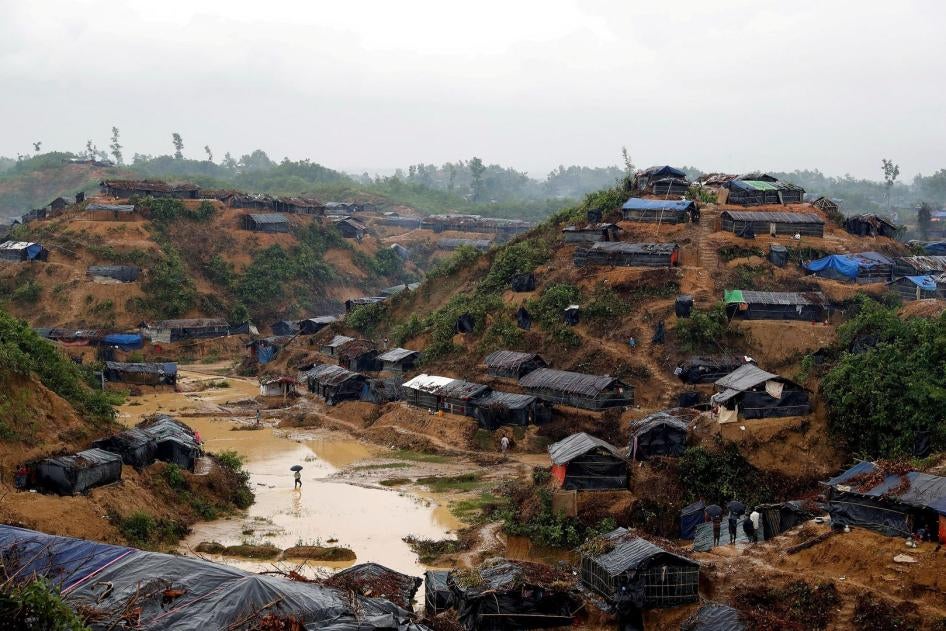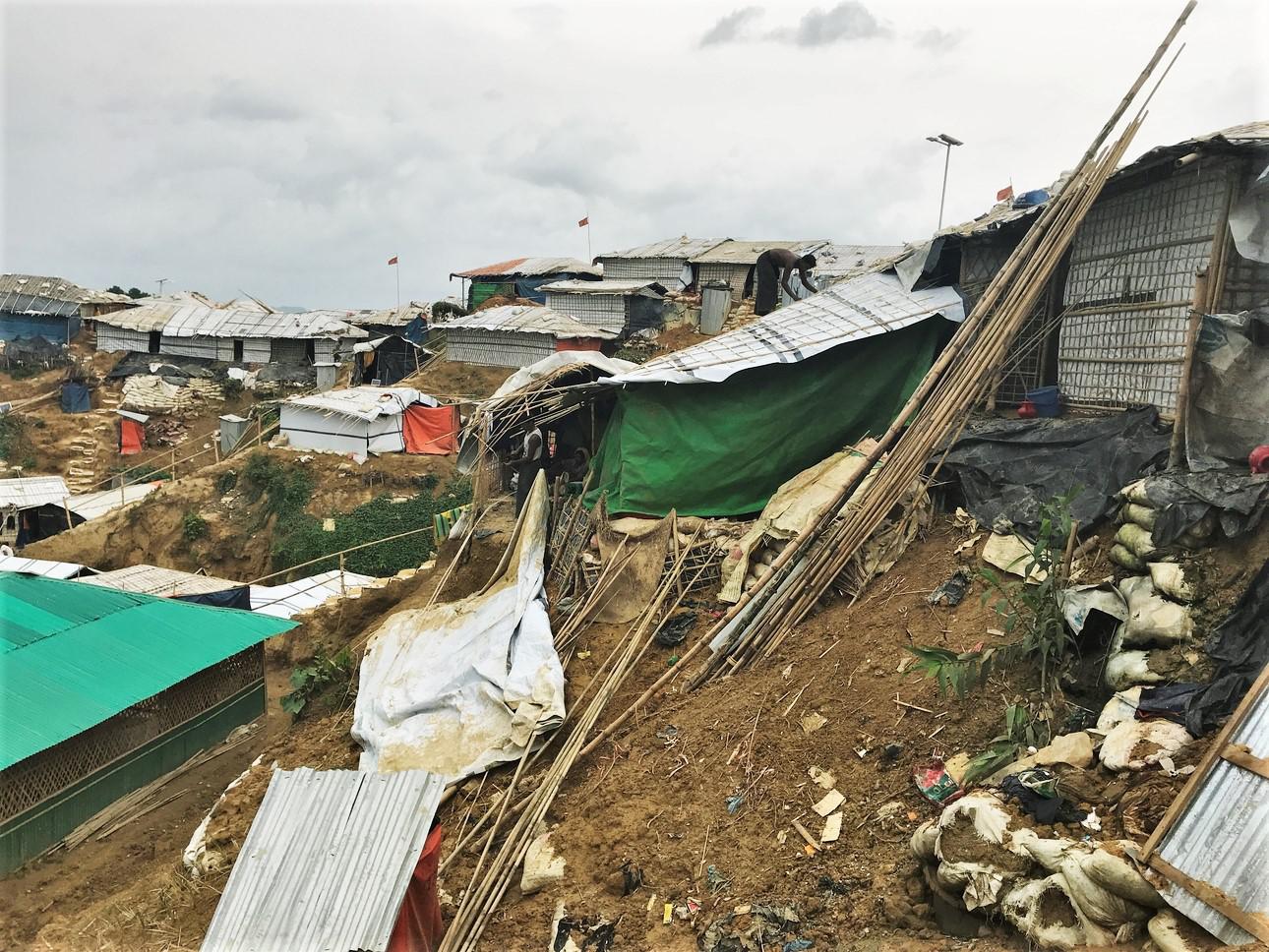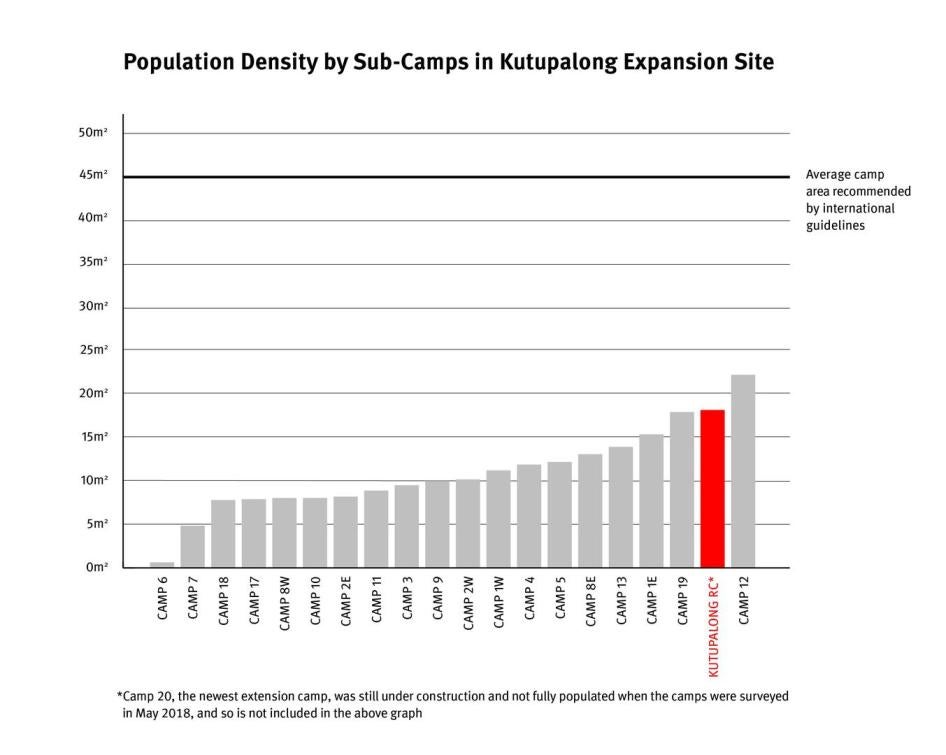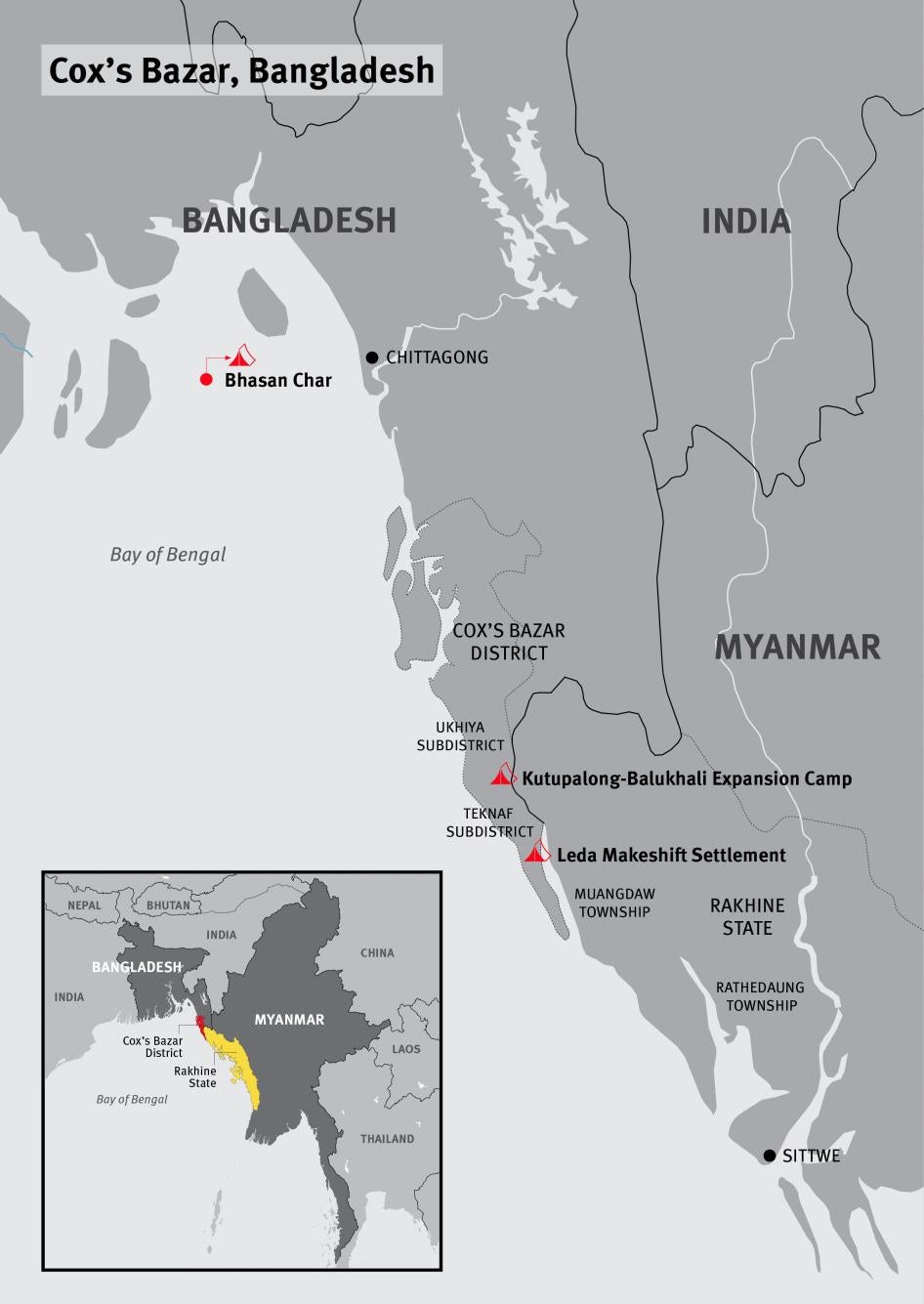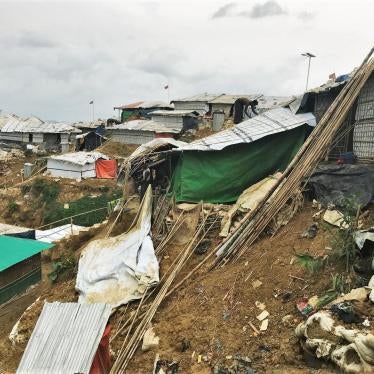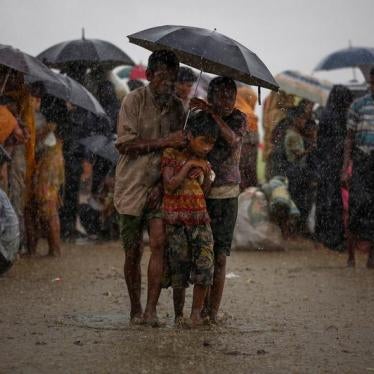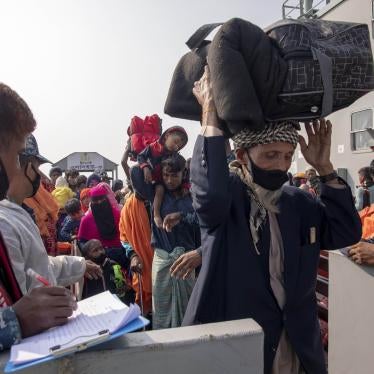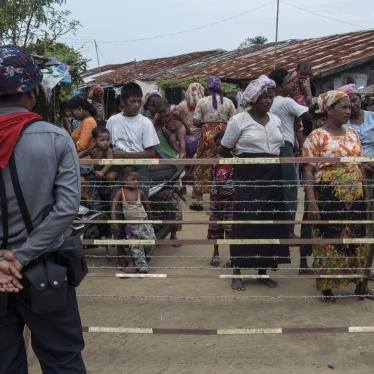(Bangkok) – The Bangladeshi government should relocate Rohingya refugees living in a severely overcrowded mega camp to safer ground in Cox’s Bazar, Bangladesh, Human Rights Watch said in a report issued today. The refugees, who fled the Burmese military’s campaign of ethnic cleansing that began in August 2017, should not have to face flooding and landslides, and should have sturdier shelters and adequate education for their extended stay.
The 68-page report, “‘Bangladesh Is Not My Country’: The Plight of Rohingya Refugees from Myanmar,” is based on a May 2018 visit to Cox’s Bazar. Human Rights Watch found that the mega camp is severely overcrowded. The average usable space is 10.7 square meters per person, compared with the recommended international standard of 45 square meters per person. Densely packed refugees are at heightened risk of communicable diseases, fires, community tensions, and domestic and sexual violence. Bangladeshi authorities should relocate Rohingya refugees to smaller, less densely packed camps on flatter, accessible, nearby land within the same Ukhiya subdistrict where the mega camp is located, Human Rights Watch said.
“Bangladesh has rightfully garnered international praise for receiving 700,000 Rohingya refugees, though they still face difficult conditions,” said Bill Frelick, refugee rights director at Human Rights Watch and author of the report. “Bangladesh should register fleeing Rohingya as refugees, ensure adequate health care and education, and let them pursue livelihoods outside the camp.”
Many of the new Rohingya arrivals, plus another 200,000 who had fled previous waves of persecution in Myanmar, are living in what has become the world’s largest refugee camp, Kutupalong-Balukhali Expansion Camp. Despite efforts by the refugees and aid agencies to strengthen huts, build safer infrastructure, and develop safety plans, the camps and their residents have remained highly vulnerable to catastrophic weather conditions. On July 25, five children were killed in flooding and landslides.
Bangladeshi authorities, to maintain pressure on Myanmar to agree to the return of the refugees, insist that the camps are temporary. This, however, contributes to the poor conditions in the camps, as the government has blocked the construction of permanent structures, including cyclone-resistant buildings, and has not allowed for other infrastructure that would suggest longer-term stay. Educational opportunities are inadequate.
“I live in fear of landslides,” said a 26-year-old mother of four living in a hut on a steep slope in the camp. “I keep putting sandbags next to our hut to keep it from sliding down the hill. I would like to relocate to a safer place. I think about it all the time. No one has talked to me or offered relocation.”
Relocation of a significant number of refugees to less densely packed camps, with fewer environmental risks and adequate standards of services, is crucial for the health and well-being of all the refugees, Human Rights Watch said. However, this needs to be done with the consultation and consent of the refugees to keep their displaced village communities intact and maintain contact with the broader Rohingya refugee community.
The Bangladesh navy and Chinese construction crews have prepared the uninhabited island of Bhasan Char for the transfer of refugees from the Cox’s Bazar area. The Bangladeshi foreign ministry, in response to a letter from Human Rights Watch, said that since the refugee presence “is destroying the overall economic, social, environmental situation,” the government would soon start relocating 100,000 Rohingya to Bhasan Char, which will be fortified by an embankment to protect from high tides and waves. However, the mangrove-and-grass island, formed only in the last 20 years by silt from Bangladesh’s Meghna River, appears unsuitable for accommodating the refugees. Experts predict that Bhasan Char could become completely submerged in the event of a strong cyclone during a high tide.
The island would most likely have very limited access to education and health services, and few opportunities for livelihoods or self-sufficiency. The government has made no commitment to allow refugees’ freedom of movement in and from Bhasan Char. In addition to Bhasan Char’s environmental failings, housing refugees there would unnecessarily isolate them, and preventing them from leaving would essentially turn the island into a detention center.
Bhasan Char is not the only relocation option. Experts pointed out six feasible relocation sites in Ukhiya subdistrict totaling more than 1,300 acres which could accommodate 263,000 people. These sites are in an eight-kilometer stretch almost due west of the Kutupalong-Balukhali Expansion Camp, toward the coast.
The Bangladeshi foreign ministry said that while Bangladesh was providing basic needs, “the ultimate solution of the Rohingya problem lies in the safe, dignified, voluntary and sustainable return” of the refugees. The ministry said they had already released 6,000 acres of reserve forest, and due to the existing “land shortage of our own population,” no further alternative land was available. They said the only other possible alternative settlement was in Bhasan Char.
Donor governments and intergovernmental organizations should be genuinely and robustly involved in supporting Bangladesh to meet the humanitarian needs of all Rohingya refugees. They should fund the humanitarian appeal for the Rohingya humanitarian crisis, but also apply concerted and persistent pressure on Myanmar to meet all conditions necessary for safe, dignified, and sustainable return of the Rohingya refugees.
The refugees interviewed by Human Rights Watch all said they wanted to return to Myanmar, but only when conditions allow them to return voluntarily. These include citizenship, recognition of their Rohingya identity, justice for crimes committed against them, return of homes and property, and assurances of security, peace, and respect for their rights.
“It has been nearly one year since Myanmar’s campaign of killings, rape, and arson drove the Rohingya refugees across the border. Responsibility for this crisis lies with Myanmar, even though the burdens of this mass influx have mostly fallen on Bangladesh,” Frelick said. “Myanmar’s failure to take any meaningful actions to address recent atrocities against the Rohingya, or the decades-long discrimination and repression against the population, is at the root of delays in refugees being able to go home.”
